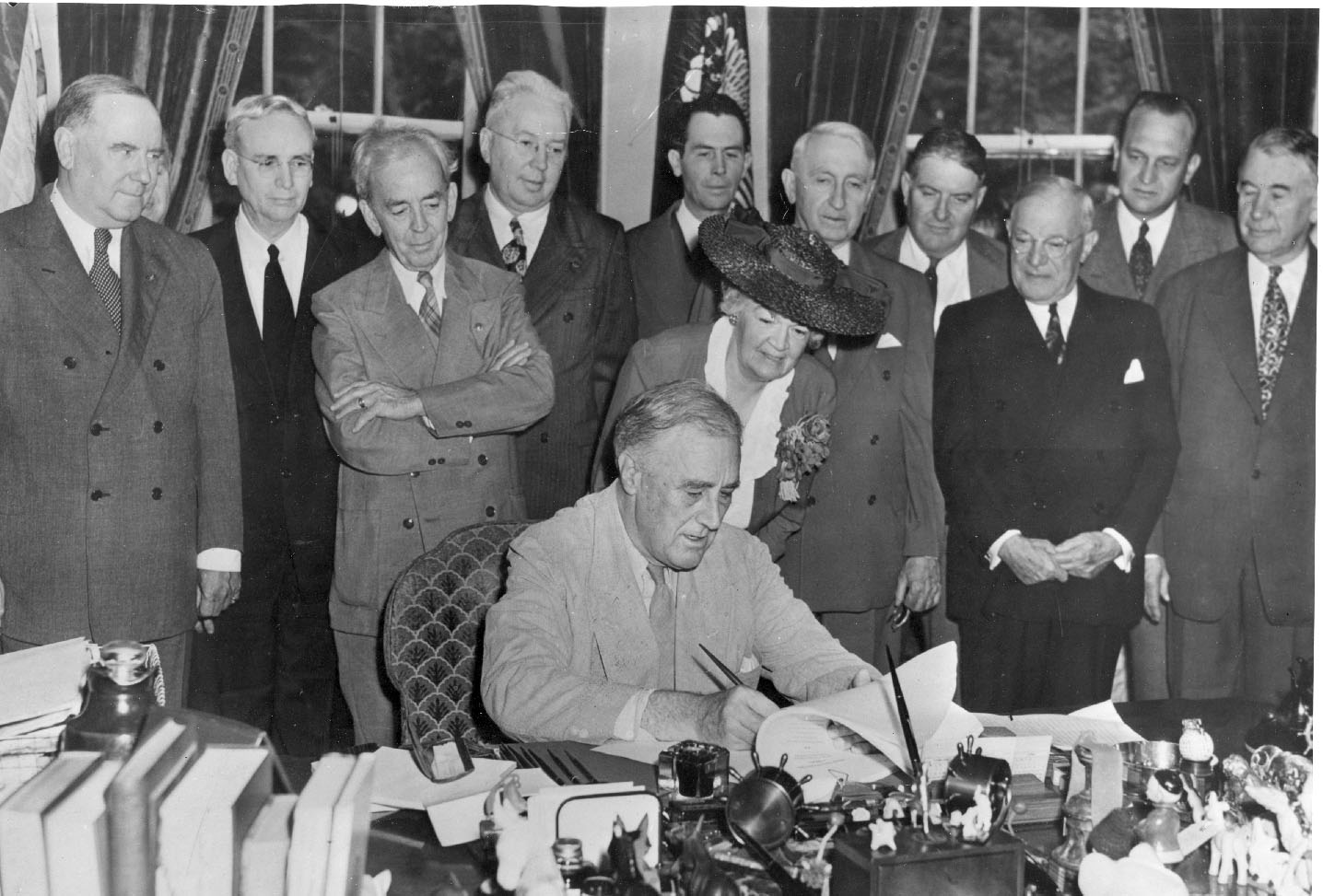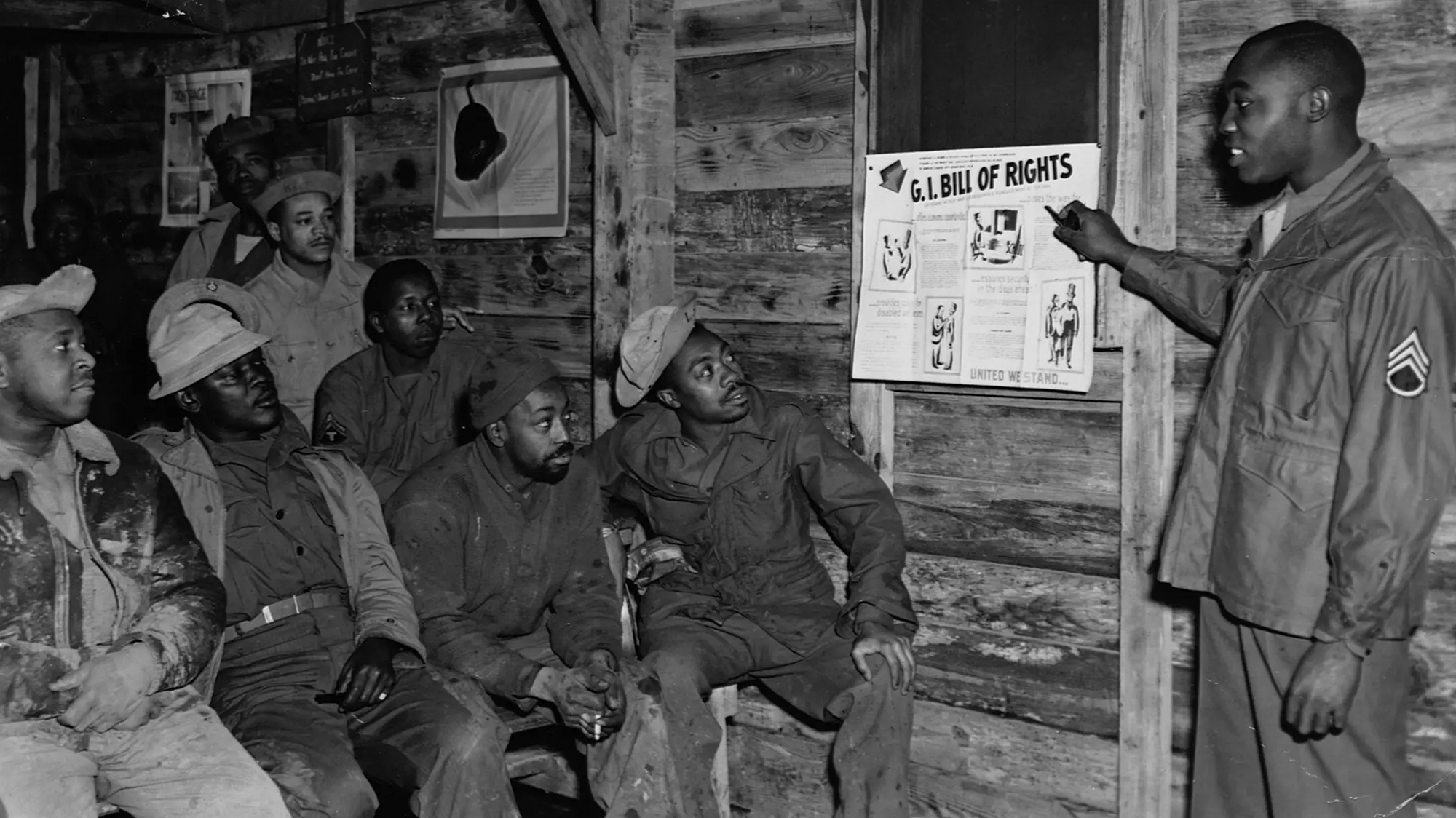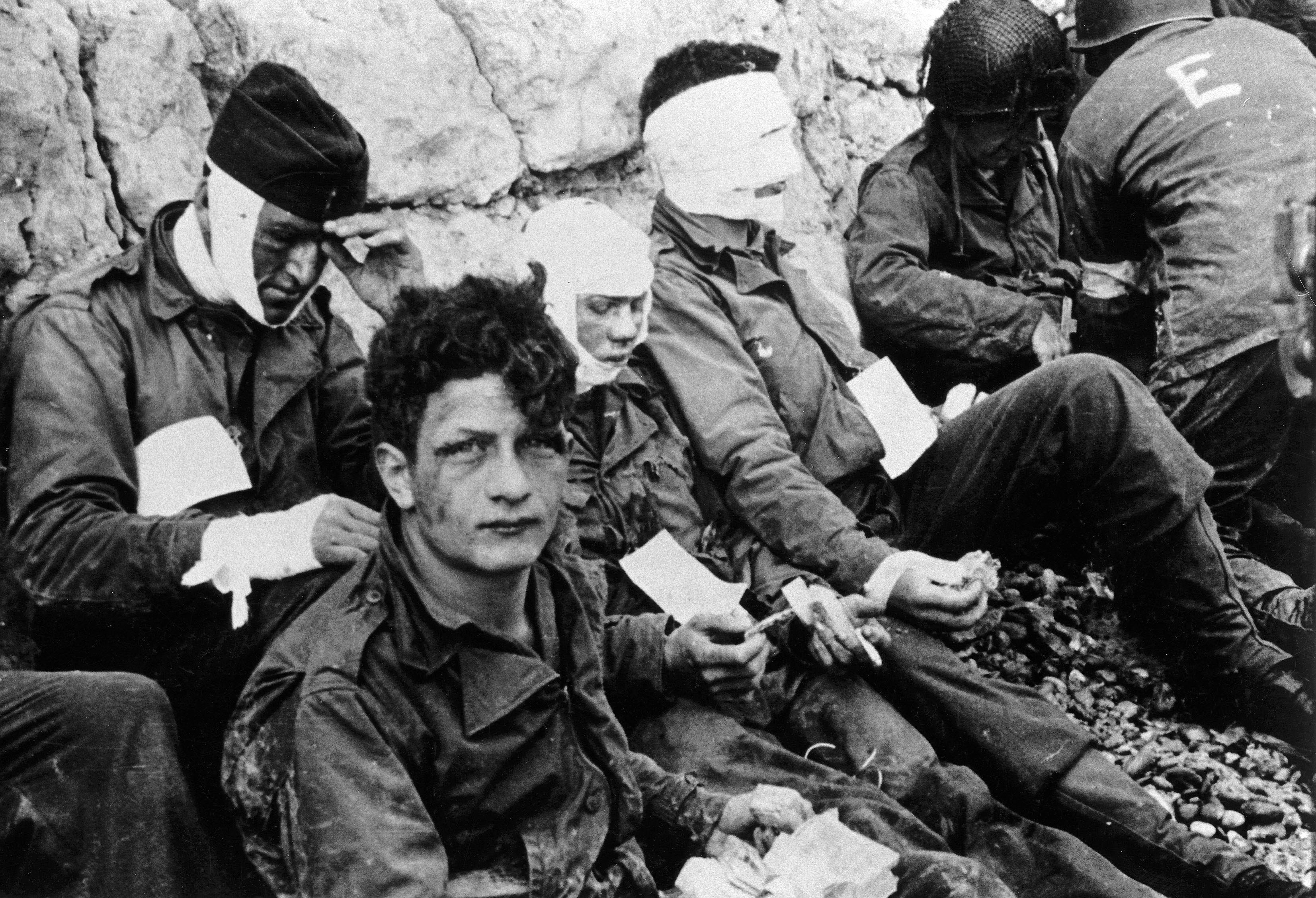
After the devastation of World War II, the United States faced a monumental challenge: reintegrating millions of veterans back into civilian life. The war had caused immense loss, and the men and women who served were returning to a nation that was on the cusp of a new era.
To ensure that those who had fought for freedom would have the opportunities to build fulfilling lives, the U.S. government passed the GI Bill of Rights in 1944.
This landmark legislation provided returning veterans with unprecedented benefits, changing not only their futures but also the future of American society as a whole.
The GI Bill is often credited with being one of the most transformative pieces of legislation in U.S. history, helping to shape the nation's post-war prosperity and solidifying the United States as a global leader in education, innovation, and economic power.
The GI Bill, formally known as the Servicemen's Readjustment Act of 1944, was a product of the American government's recognition of the immense sacrifices made by servicemen and women during the war.
It was designed to ensure that veterans would not only be rewarded for their service but would also have the support needed to transition back into civilian life.
Through a combination of educational benefits, housing loans, and unemployment assistance, the GI Bill provided returning veterans with the tools they needed to succeed in a rapidly changing world.
By providing these benefits, the government laid the foundation for a prosperous middle class and helped foster a period of economic growth that would define the American landscape for decades.

The GI Bill's Educational Benefits: A Gateway to Opportunity
One of the most significant provisions of the GI Bill was its funding for higher education. The bill provided veterans with up to four years of tuition assistance, allowing millions of men and women to pursue college degrees and vocational training.
Before the GI Bill, higher education was often out of reach for most Americans, especially for those from working-class backgrounds. College was seen as a privilege reserved for the wealthy, and the concept of universal access to education was still a distant dream. The GI Bill changed that by making college education accessible to the masses.
As a result of the GI Bill, the number of college enrollments surged in the post-war years. Between 1944 and 1956, nearly 8 million veterans took advantage of the educational benefits, and the number of Americans attending college more than doubled.
This increase in higher education had profound implications for the American workforce. Veterans who earned college degrees were able to enter professions that had previously been closed off to them, including law, medicine, engineering, and business.
Many veterans went on to become leaders in their fields, contributing to the innovation and progress that would define the post-war American economy.
The GI Bill also paved the way for the growth of vocational and technical education. With the rise of industries that required specialized skills, the bill’s provisions allowed veterans to pursue training in fields such as electronics, automotive repair, and healthcare.
This expanded access to vocational education helped create a skilled workforce that was essential to the economic boom of the 1950s and 1960s.
The educational benefits provided by the GI Bill contributed directly to the growth of the American middle class, as veterans who might have otherwise struggled to find stable employment were now able to access high-paying, stable jobs.

Housing Benefits: The American Dream of Homeownership
In addition to educational support, the GI Bill also provided veterans with the means to achieve the American dream of homeownership. The bill offered guaranteed loans for homes, farms, and businesses, with no down payments and low interest rates.
This provision allowed millions of veterans to purchase homes in suburban neighborhoods, many of them for the first time in their lives. The homeownership benefits of the GI Bill played a key role in the rapid expansion of the American suburbs in the post-war years.
Before the GI Bill, homeownership was a distant goal for many Americans, particularly veterans who had returned from war with limited financial resources. The lack of affordable housing options, combined with the inability to secure loans due to lack of collateral or credit history, meant that owning a home was often out of reach for the average person.
The GI Bill’s housing provisions, however, changed that by making home loans accessible to veterans with little or no financial resources. The result was an unprecedented surge in homeownership, which not only helped individual veterans and their families build wealth but also contributed to the growth of the American economy.
The GI Bill’s housing benefits helped shape the development of the American suburbs, particularly in the 1950s. As veterans used their housing loans to buy homes, entire communities sprang up in previously undeveloped areas, offering families affordable housing options close to jobs and schools.
This suburban boom contributed to the rise of the American middle class, as homeownership became a symbol of success and stability. For many veterans, owning a home was not only a financial accomplishment but also a personal milestone that represented the fulfillment of the American Dream.
Unemployment Benefits: A Safety Net for Veterans
Another crucial aspect of the GI Bill was its provision of unemployment benefits. For veterans who were unable to find work after returning home, the bill offered up to a year of unemployment compensation.
This financial safety net helped ensure that veterans could support themselves and their families while they searched for employment or took advantage of educational opportunities.
The unemployment benefits provided by the GI Bill were instrumental in easing the transition from military to civilian life, as they allowed veterans to adjust to their new circumstances without the immediate pressure of financial instability.
The GI Bill’s unemployment benefits were not only a lifeline for veterans but also a means of stabilizing the broader economy. By providing financial support to millions of returning veterans, the government helped prevent widespread unemployment and economic downturn.
Veterans who received unemployment compensation were able to spend money on goods and services, which in turn helped stimulate economic growth and consumer demand.
The economic stability provided by the GI Bill was a key factor in the post-war economic boom, which saw unprecedented levels of prosperity and growth.

The GI Bill's Impact on the American Middle Class
The GI Bill's combination of educational, housing, and unemployment benefits had a transformative effect on American society. By providing returning veterans with the tools to achieve higher education, homeownership, and financial stability, the GI Bill helped create the foundation for the American middle class.
Before the war, the middle class was a small and relatively homogeneous group, but the GI Bill helped expand it by providing opportunities for millions of veterans who had previously been excluded from the benefits of upward mobility.
The GI Bill’s impact on the American middle class cannot be overstated. By making college education accessible to a new generation of Americans, the bill helped create a more educated and skilled workforce.
This in turn fueled the growth of new industries and technological innovations, contributing to the economic prosperity of the post-war years.
Similarly, the housing benefits provided by the GI Bill allowed millions of families to build wealth through homeownership, which in turn helped stimulate economic growth and the expansion of the suburban economy.
The legacy of the GI Bill is still felt today. The expansion of higher education, homeownership, and financial stability for veterans helped lay the groundwork for the growth of the American middle class in the 20th century.
Today, the middle class continues to be the backbone of the U.S. economy, and many of the values of the GI Bill, such as access to education and economic opportunity, continue to shape public policy and social programs.

Conclusion
The GI Bill of Rights stands as one of the most important pieces of legislation in American history. It was a direct response to the sacrifices made by U.S. servicemen and women during World War II and a recognition of the need to provide them with the resources to succeed in civilian life.
Through its provisions for education, housing, and unemployment benefits, the GI Bill helped millions of veterans achieve the American dream of upward mobility and economic success.
In doing so, it played a key role in shaping the American middle class and setting the stage for the economic boom of the post-war years. The GI Bill not only honored the sacrifices of American servicemen and women but also helped build a stronger, more prosperous America for future generations.
-1749719671-q80.webp)
-1749633601-q80.webp)
-1749630230-q80.webp)
-1749627990-q80.webp)